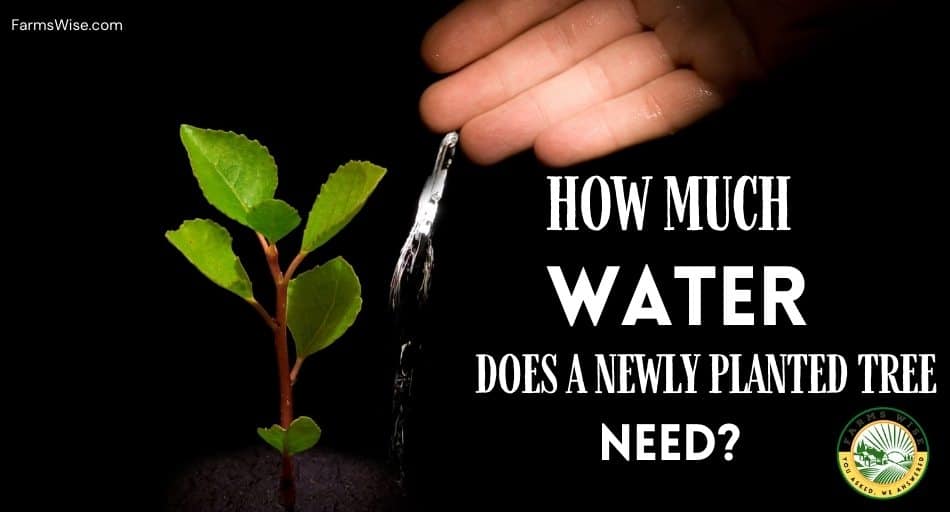Fall is a great time to fertilize your trees and plants, feeding them nutrients to provide fortification for the colder months to come, and plumping them with vitamins in preparation for the sleepy Winter chill.
While there are different ways to administer food for plants and a multitude of different products, fertilizer spikes are amongst the most popular. But do fertilizer spikes work?
Do Fertilizer Spikes Work?
As a whole, fertilizer spikes are indeed an effective and efficient way of providing extra nutrients to your trees and plants over a prolonged period of time, they do what they are supposed to do. They provide a convenient set-and-forget method of fertilization that can save you time.
Let’s look at what they are, how they work, and how to best use them.
What are fertilizer spikes and what do they do?
1. What are fertilizer spikes?
Fertilizer spikes are hardened spikes that contain compressed amounts of plant nutrients and occasionally other ingredients. Spikes may be completely organic in their composition or contain a combination of organic and inorganic ingredients depending on the brand and formulation.
Each fertilizer spike has a pre-mixed amount and composition of nutrients and there are different spikes for different types of trees.

Their pre-mixed formulation makes them an effective method of preventing over-fertilization so long as you select the spikes best suited to your particular trees and environment.
Fertilizer spikes suit a large variety of plants including established trees, shrubs, fruit-bearing trees and plants, and even indoor plants. They are ready to go straight from the packet saving you the task of hauling heavy bags of fertilizer around and the mess of mixing them.
RELATED: Is Vinyl Fencing Recyclable? (This is Important)
2. What do fertilizer spikes do?
By releasing nutrients directly into the soil, fertilizer spikes stimulate biological activity providing plants with safeguards against pests and diseases contributing to their growth and health over time.
Should you use fertilizer spikes?
If you’re time-poor, space-restricted, or perhaps don’t have as green a thumb as you’d like, then you should consider using fertilizer spikes. They are a great fertilization option that is simple to apply, long-lasting, and easily stored in minimal space.
Fertilizer spikes work best when used in conditions where the soil is low fertility and in contact with trees that require additional nutrients. It’s possible to conduct tests to determine the nutrient levels present in the soil.
This can be done in consultation with your local council or with specialty testing kits. However, as soil testing presents a level of technicality or effort not often desired by home gardeners, fertilizer spikes emerge as an attractive option.
How to apply fertilizer spikes?

Fertilizer spikes are installed by placing them around the dripline of a tree which is the perimeter point from the truck to where the foliage extends its reach.
Take care not to place spikes too close to the tree’s trunk as this can damage or even kill a tree. Spikes need to be fixed into the ground.
Using a rubber mallet is a handy hint to avoid splitting the spike open during application and disturbing its carefully balanced formula of ingredients.
A sound method is to stake out a hole below the tree’s dripline, place the spike in the hole, and then gently hammer it into place with the mallet. Once hammered into place, the spikes require no more attention until it is time to remove them.
How long does it take for fertilizer spikes to dissolve?
The sustained release of fertilizer spike nutrients is triggered by fungal and bacterial activity in the soil and to a lesser extent by water application. For these reasons, spikes will dissolve at different rates influenced by soil composition and rain activity.
Spikes may provide a minimum of several months of slow-release fertilization and a maximum of around three months.
Can you break up fertilizer spikes?
The nutrients in fertilizer spikes are concentrated into a solid formation and their release occurs in contact with the soil over a period of time.
Unlike granular and liquid fertilizers, which can be administered in varying amounts, fertilizer spikes are not designed to be broken up and distributed in parts.
If you’re keen on some experimentation there is the option of crumbling the spike manually however once you do this you are no longer in control of how the pre-determined formula of nutrients is administered to your plants.
Best to read and follow the instructions on the density and application of spikes.
How many fertilizer spikes do you need for a tree?
When using fertilizer spikes for shrubs, you can estimate one spike for every three feet of growth. You may also wish to take into account the varying needs of the trees and shrubs in any given area. If there are any newly planted trees you may want to skip spiking them altogether.
As a general rule, fertilizer spikes should be placed about three feet apart. The size of your trees will determine how many spikes you require. For every one or two inches of trunk diameter, you will need roughly two fertilizer spikes.
Do newly planted trees need fertilizer?

Newly planted trees are settling into their new homes and are establishing their root systems in the ground. Generally, their nutrient needs are quite low during the first year and they should not need fertilization during this time.
The introduction of extra nutrients such as nitrogen during this period can suppress root growth and inhibit a newly planted tree’s growth.
How often should you fertilize trees?
If you’re using fertilizer spikes, twice yearly is a rough recommended guide to fertilization frequency. Fertilizing once in early Spring and again mid-Fall should do the trick, keeping your trees and plants vitaminized through the seasons.
Avoid fertilizing in late Summer or very early Fall as stimulating growth during these periods opposes the trees’ needs to prepare for dormancy.
Trees and plants respond well to a little TLC, and the care you provide in Fall provides their best protection through the Winter. Fertilizer spikes are a way of administering this care over a period and in calculated doses.
RELATED: How Much Water Does a Newly Planted Tree Need?
Stay alert to any signs that your trees may require fertilization such as dead branches, discolored or thinning leaves, and shortened twigs.

Jack is the owner, chief editor, and senior writer of this website.
Machinery, engines, and farming have always been a passion of his since he was a young boy. Growing up on a small farm in rural America, he learned the value of hard work and dedication from an early age.
After completing his degree in Engineering, he decided to follow his dream and became a farmer in 2009.
Since then, he has gained a wealth of knowledge and experience in the field. He has grown a variety of crops, tended to farm animals, and worked with all sorts of farming machinery. Continue reading…




